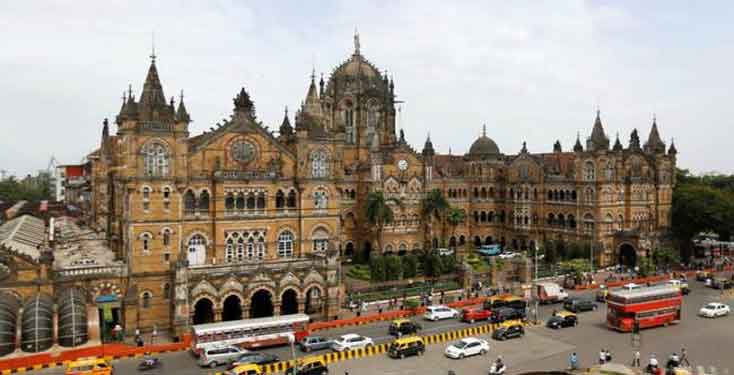Chhatrapati Shivaji Maharaj Terminus Mumbai TRAVEL GUIDE

Victoria Terminus, a former name for Chattarabati Shivaji Terminus, is a sophisticated railway station in the capital of West India, Maharashtra. The magnificent structure is a splendid representation of Victorian style Gothic architecture in India. In fact, the railway station, which is still energies of course, is advertised as a UNESCO World Heritage Site. The station is constantly demanding with hints of metro city and locals. It can be laughable and a group for some, yet some still discover how to discover pulsating forms and music in the bustling Victoria Terminus. It is a prominent place among the most familiar tourist place in Mumbai that symbolizes pre-freedom India.
Victoria Terminus was built in 1887. It is the central railway headquarters and is closely linked to every one of the nation's parts. They serve separate trains for a long time and short trains or passenger separation which are often called neighborhood trains. The station displays the British Commonwealth Company and speaks to the commercial part of Mumbai. The railway stands directly on the progress of the city during this period and the evolution of the Bollywood film industry in India.
It was here that the well-known tune "Jay Ho" was filmed for Slumdog Millionaire and some of the great scenes of Bollywood Movie Ra One. Perspective on the station and the masses that accumulate to lead all the time can be more powerful for some. Guests can click on the high-rise images from a simple separation away from the station. Guests must see work after dark. The night lights are built on the magnificent building, and the very bright view will strike your mind.
History of Chhatrapati Shivaji Maharaj Terminus
Victoria Terminus, now known as Shatrapati Shivaji Maharaj Terminus (SCT), is based on a plot of land that was then filled as a storehouse for goods that were sent either to or from Mumbai. It was only in 1853 that the railway station was manufactured and hinted to Bori Bandar Railway Station. The first ever passenger train that worked in India was from Bury Bandar to Thane in 1853. In 1878, it was chosen that the railway station would be modified as Victoria Terminus to commemorate the Golden Jubilee of the Queen and the Bori Bandar Railway Station was officially known as Victoria Terminus In 1887.
The station was planned by a British engineer named F.W. Stevens, who made a diverse mix of Indian and British architecture in his structures. The station was an important center for commercial training and was named Queen Victoria, which India decided at that time. It took ten years to finish developing the structure and cost more than £ 260,000. With this consumption, it was known as the most expensive structure in the city of Mumbai.
In 1996, the Minister of Railways renamed it Chhatrapati Shivaji Maharaj Terminus and was codified as CSMT or CST (Chhatrapati Shivaji Terminus). Mumbai, for example, saw an attack feared by migrants in 2008, and the central support team was at the expense of the homeless. Over time, Chhatrapati Shivaji Terminus has faced trial time for more than 130 years and remains on being the savior of life in Mumbai.
How to Reach Chhatrapati Shivaji Maharaj Terminus
It itself a railway terminal which is connected with all the major destinations of India.
Chhatrapati Shivaji Maharaj Terminus Location
Architecture of Chhatrapati Shivaji Maharaj Terminus
The Center of Architecture in Victoria Terminus is a Gothic style Victorian architecture. It is an ideal setting for the excellent integration of Indian architecture and Italian Gothic architecture of the Victorian style. One can see the influence of Indian architecture on the horizon, and the unpredictable curves cut the ground plan and towers. Part of the work on the temple was completed by students of Jamsetji Jeejebhoy School of Art. They often did something amazing for tiles, elaborate metal walls, wood carvings and flame seedlings.
The height of the crown is enhanced by a 330-foot tall associated with rain shed of about 1200 feet. The interior consists of spacious, varied rooms with high ceilings. The focal point of the entire structure is the high focal arch. It is an octagon and has a ribbed structure with a female figure holding a light in her right hand and a wheel with nails on her left. The patio is covered with side wings topped by towers in every corner. This is in addition to the equality and the edges of the basement.
The outside consists of windows and various curves. The corridor contains lion numbers, a tiger that respresents Britain and India individually, and the whole structure consists of sandstone, limestone and Italian marble. The building comprises about 18 stages, including 11 inter-city railway stations and 8 rural railways. There are refrigerated quarters that can be accessed in return for the station which has about 20 beds for women and 58 beds for men.
© Copyright 2018 Design ByIndia Easy TripAll Rights Reserved

